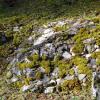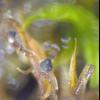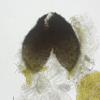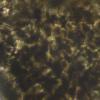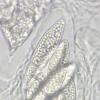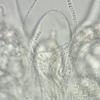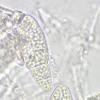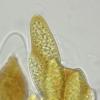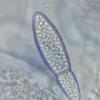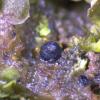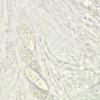
20-12-2025 23:08
Patrice TANCHAUDBonsoir, récolte sur sol sablonneux dans l'arri�

21-12-2025 09:32
Hello.A tiny ascomycete found embedded in wood in

20-12-2025 15:47
Mirek GrycHi.These grew on pine wood that was heavily covere

18-12-2025 21:17
Pol DebaenstThe identification took me to Byssonectria deformi

15-12-2025 07:09
 Danny Newman
Danny Newman
indet. Rutstroemiaceae sp. on unk. fallen leavesMc

19-12-2025 10:10
Patrice TANCHAUDBonjour, récolte réalisée en milieu dunaire, a

18-12-2025 17:23
 Bruno Coué
Bruno Coué
Bonjour,je serais heureux d'avoir votre avis sur c
Voici une espèce sur Tortella (pâturage boisé à 1015m), périthèces pyriformes 0.2 - 0.35 mm, asques à 8 spores, 105 - 155 x 33 – 35 µm, IKI-, spores biseptées, excentriques 35 - 50 x 12 – 16 µm, paraphyses hyalin et septées. Je n'ai pas trouvé d'espèce correspondante dans la littérature. Quelqu'un aurait-il une idée? Merci d'avance pour votre aide.
Elisabeth

das ist wirklich eine sehr merkwürdige Art, mit diesen ungewöhnlichen Sporen. Vielleicht könnte Dir Peter Döbbeler weiterhelfen, der sich sehr intensiv mit den bryophilen Arten beschäftigt hat, aber ich weiß nicht, ob er noch aktiv ist. Bei der Durchsicht einiger seiner Artikel habe ich allerdings nichts Vergleichbares finden können, ebenso wenig bei der Arbeit von Racovitza über die Moosparasiten.
Schöne Grüße aus Bayern
Till

Some photos remind me of the Camptosphaeria genus.
Michel.
J'ai bien l'impression que tu as mis la main sur une espèce non décrite. Ce qui n'est pas étonnant dans ces microniches. Trouver le bon genre n'est pas toujours évident dans les bryophiles. Il y a tant à faire ...
Bien amicalement,
Alain
Merci pour vos contributions, la forme des spores est particulière. Je pense aussi qu'il y a encore des découvertes à faire sur les mousses.
Elisabeth
Arnold: Ich habe eine andere Sammlung aus einem Lärchenwald von Italien mit granulierten Sporen, allerdings messen diese nur 27 - 37 x 9 - 11 µm (siehe Bilder). Dies passt eher zu Bryomyces gymnomitrii als diese Art mit Sporen bis zu 50 µm.
J'ai une autre collection d'une forêt de mélèzes d'Italie avec des spores granulées, mais elles ne mesurent que 27 - 37 x 9 - 11 µm(voir photos). Cela correspond mieux à Bryomyces gymnomitrii que cette espèce avec des spores allant jusqu'à 50 µm.
Interesting collection, do you know the host? I think it may be the same as what was found by Lothar on Nowellia mentioned here http://www.ascofrance.com/search_forum/73607. I have his collection but I failed to sequence it successfully. It is very similar to B. gymnomitrii but differs in some respects, primarily in host preference. The morphology and behaviour of the mycelium is important in this group.
Yours has persistent paraphysoids, mentioned to be fragmented or absent in the type of B. gymnomitrii. The liverwort host is also different, though I am not sure what yours is, maybe Barbilophozia or Cephalozia. The spores of your second collection are close to Lothar's, but in the first they are very odd.
I have actually very recently submitted a manuscript with some new records and photos of B. gymnomitrii. It is quite different, at least on Gymnomitrion, also because the ascomata form in gregarious clusters on the host. I will send you the plate privately if you wish.
All the best,
George

